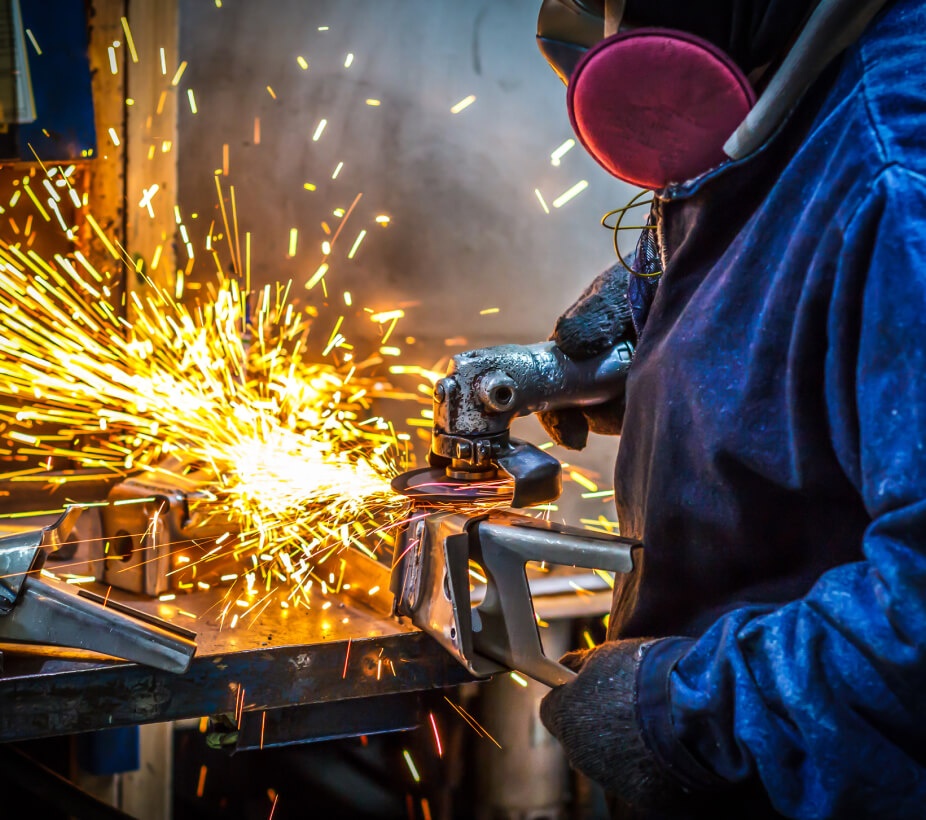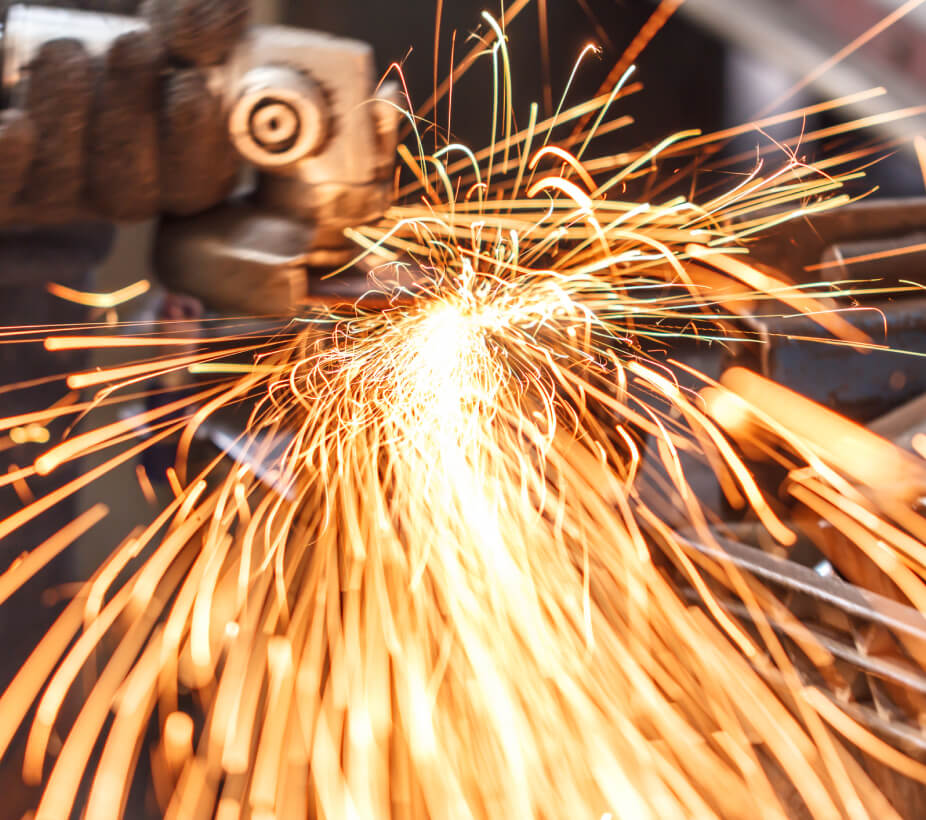Best protection for your hands for metal fabrication jobs
Every construction site is full of potential hazards. Wearing the right PPE is extremely important to maintain a high standard of workplace safety. A worker’s hands are his most important asset, and a quality pair of safety gloves are essential to protect from cuts and burns. So, what factors do you need to consider when picking the perfect glove for your job? Here are the three key things you should prioritize:
- Superior thermal protection from heat and sparks
- Superior cut resistance
- Comfortable to wear while providing dexterity to perform mechanical tasks effectively
Let’s look at each of these three criteria in detail.
- Thermal protection
For regular cutting and grinding applications, a good glove should provide sufficient thermal protection for up to 100 degrees Celsius. Gloves that are made from genuine cowhide leather will provide this level of protection. For welding, plasma cutting or foundry applications, you will need gloves that offer higher thermal protection of up to 200 degrees Celsius. Many cheap gloves claim adequate thermal protection but fail the test in the real world. You really shouldn’t compromise your safety by buying gloves that are cheap which could cause nasty burns. Make sure your gloves come with a reputable and credible EN or ANSI certification. This guarantees their quality and keeps you and your workers safe and gives you peace of mind.
- Superior cut resistance
Holding and carrying metal is part and parcel of fabrication. A good quality glove should be able to easily withstand normal abrasion that comes from handling metal. Cheap gloves will easily rip or tear and expose your hands to sharp metal that can cause serious deep cuts and even loss of fingers. A good glove should be able to withstand the rigorous ‘rubbing a sharp-edged or serrated metal rod on the glove test.’ This is part of the EN certification requirement. A good quality certified glove will show hardly any sign of wear and tear with this test. With proper cut resistance you can be assured that you will be protected from any injuries caused by abrasion, laceration, and puncture. So, make sure your gloves offer superior cut-resistance.
- Comfortable to wear while providing dexterity to perform mechanical tasks effectively
A glove that offers you good thermal protection and cut resistance, should also provide maximum comfort, flexibility and dexterity for operating tools and picking up small objects. Fabrication projects are intensive and call for long hours on the job. Your gloves should be comfortable to wear for long periods of time. Unfortunately, too many gloves that offer good thermal protection are not comfortable to wear. They are stiff and inflexible, and operators have a real challenge operating their equipment, resulting in a loss of time and productivity.
Check that your gloves fit you well and feel comfortable. Do a simple test to pick up small objects and see how the gloves fare. This simple test will save you a lot of grief in the long run.
Always use the type of glove recommended by the equipment manufacturer. Very often, supervisors cut corners by recommending the use of multiple layers of cheap gloves. Not only is this practice dangerous, but also severely compromises the productivity of the worker. Do not compromise on your gloves or else this could cost you dearly.
Here’s a quick reference checklist on how to pick the right gloves for the job:
- Know the type of job you need the gloves for
- Know what the fabrication process entails (picking up/moving metal around, the work environment etc)
- Check the equipment manufacturer recommendations for gloves.
- Determine the specific hazards you may encounter
- Match the gloves to the needs and hazards of the work
- Ensure the gloves come from a reputable manufacturer with proper certification (EN/BSI)
- Check for proper fit, comfort and flexibility
Here are some typical types of gloves used for fabrication:
Manual ARC Welding: For this application, you will need welding Gloves. These are used when welding with machines of 150A to 500A power capacity. As the power can go quite high, these machines create stronger sparks which can cause nasty burns if your hands and arms aren’t adequately protected. Therefore, the gloves need to have a minimum thickness of 1.3mm to protect your hands and should be 14 inches in length to adequately protect your arms.
TIG Welding (Tungsten Inert Gas): TIG Welding is used for thinner materials such as carbon steels, low alloy steels, aluminum, titanium, magnesium and all non-ferrous alloys. The power capacity of the TIG machine ranges from 150A to 200A. This is significantly lower than the manual arc machines, hence the sparks are much smaller. TIG Welding Gloves are specifically created with these conditions in mind. These gloves are thinner and fit the fingers snugly, allowing the operator greater dexterity and the flexibility he needs to operate the knob controls.
MIG Welding (Metal Inert Gas): Most construction today uses steel. MIG Welding is used to specifically cut steel which requires more power. MIG welding machines power capacity typically ranges from 200A-400A. Given the higher power, the sparks created are therefore larger. MIG welding gloves are not only designed to handle the bigger sparks but also fit snugly and so allow for the same dexterity and flexibility as TIG welding gloves.
Plasma Cutting: For this process, you will need special welding gloves designed for high power Plasma cutters which typically operate between 600A to 1000A capacity range. The sparks emitted by these higher-powered machines are much larger. Therefore, you need thick gloves that protect your hands as well as your arms. These are thicker gloves than the ones used for ARC welding. Given the bigger sparks emitted due to the higher power, you will also need good sleeves and an apron for full body protection.
WHY CHOOSE TUFF for all your glove needs?
All TUFF safety gloves are made of genuine cow split leather and are EN certified. Our wide range of gloves are designed to handle any fabrication job application. They offer the best safety, comfort and dexterity that operators need, to perform their tasks efficiently and safely.
With TUFF gloves, you can be assured you are adequately protected at all times, in any work environment.
For over three decades, TUFF Industries has been manufacturing world-class PPE equipment that has kept thousands of workers safe every day on every project across the globe.
Find out more about TUFF’s extensive range of European Certified gloves and PPE equipment HERE.
TUFF is a global leader in industrial fabrication and safety equipment. Our world-class products are the industry gold standard and are being used every day across the globe and across industries to help build the future. Through our innovative solutions, we help our clients get their projects done on time, on budget and safely.
For more information on how we are empowering progress for a better world visit our website https://tuff-asia.com/


